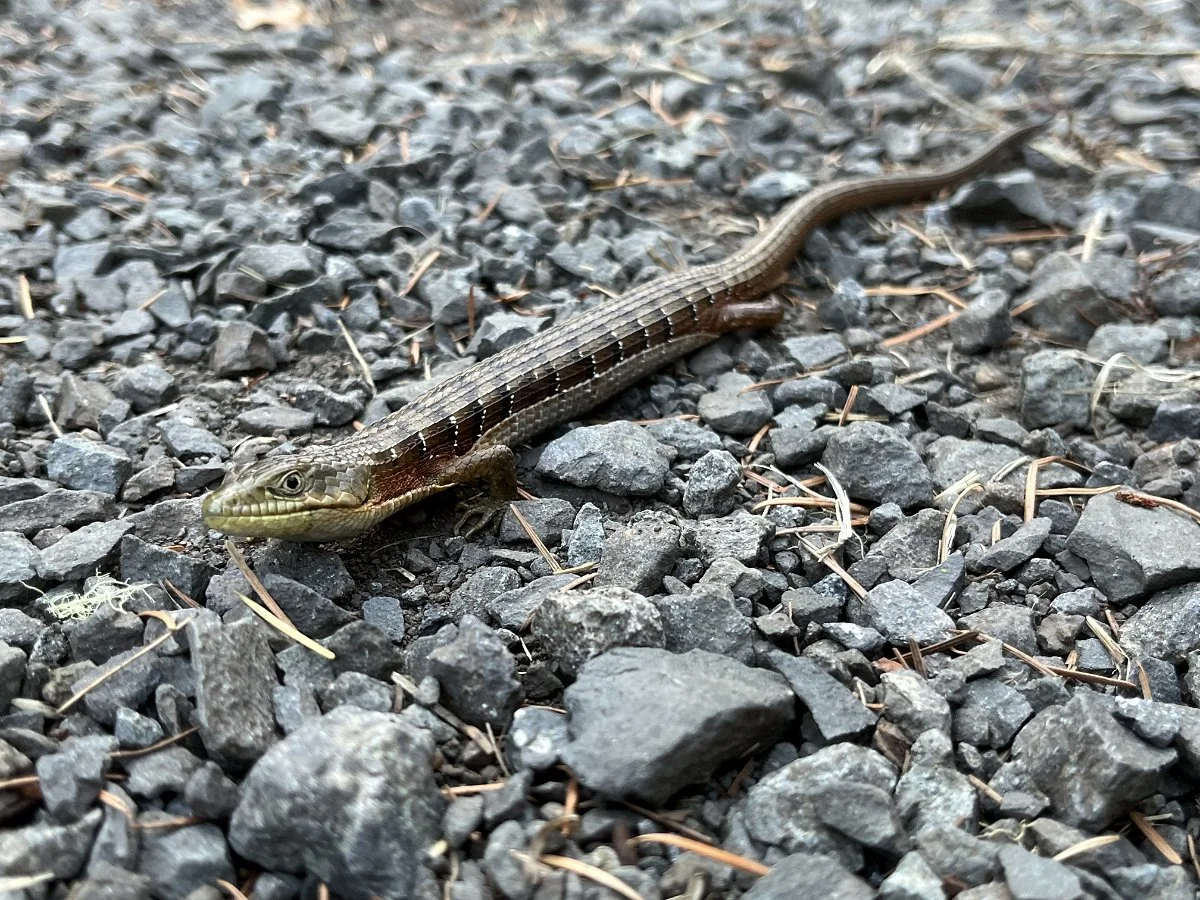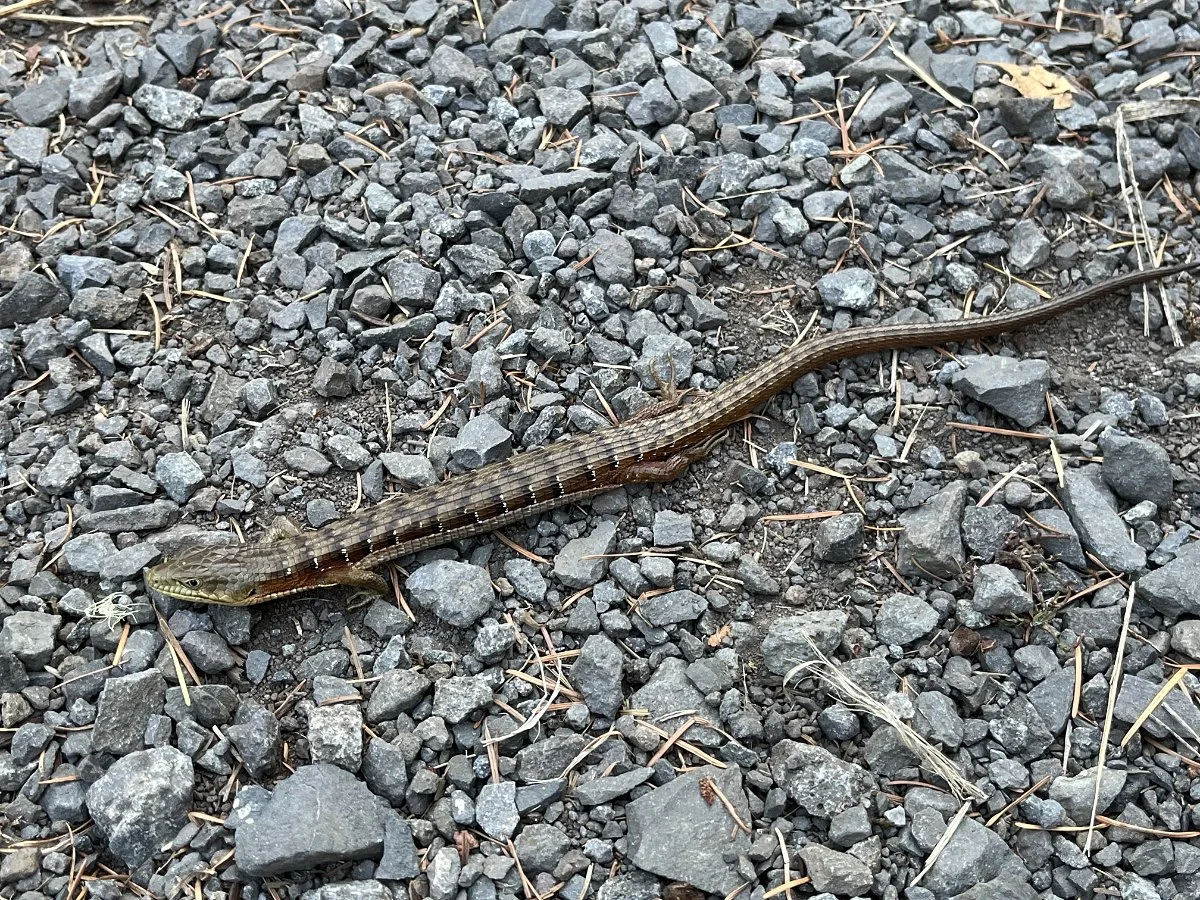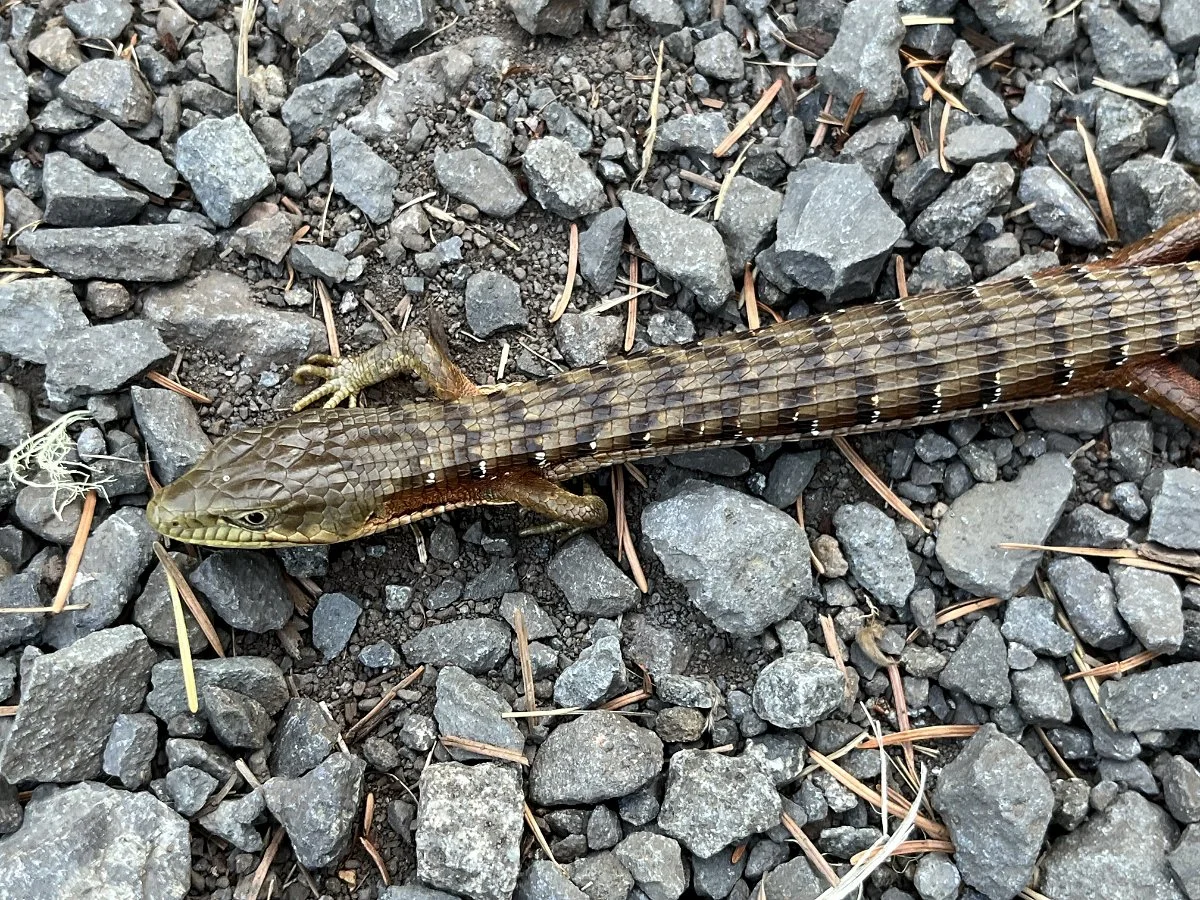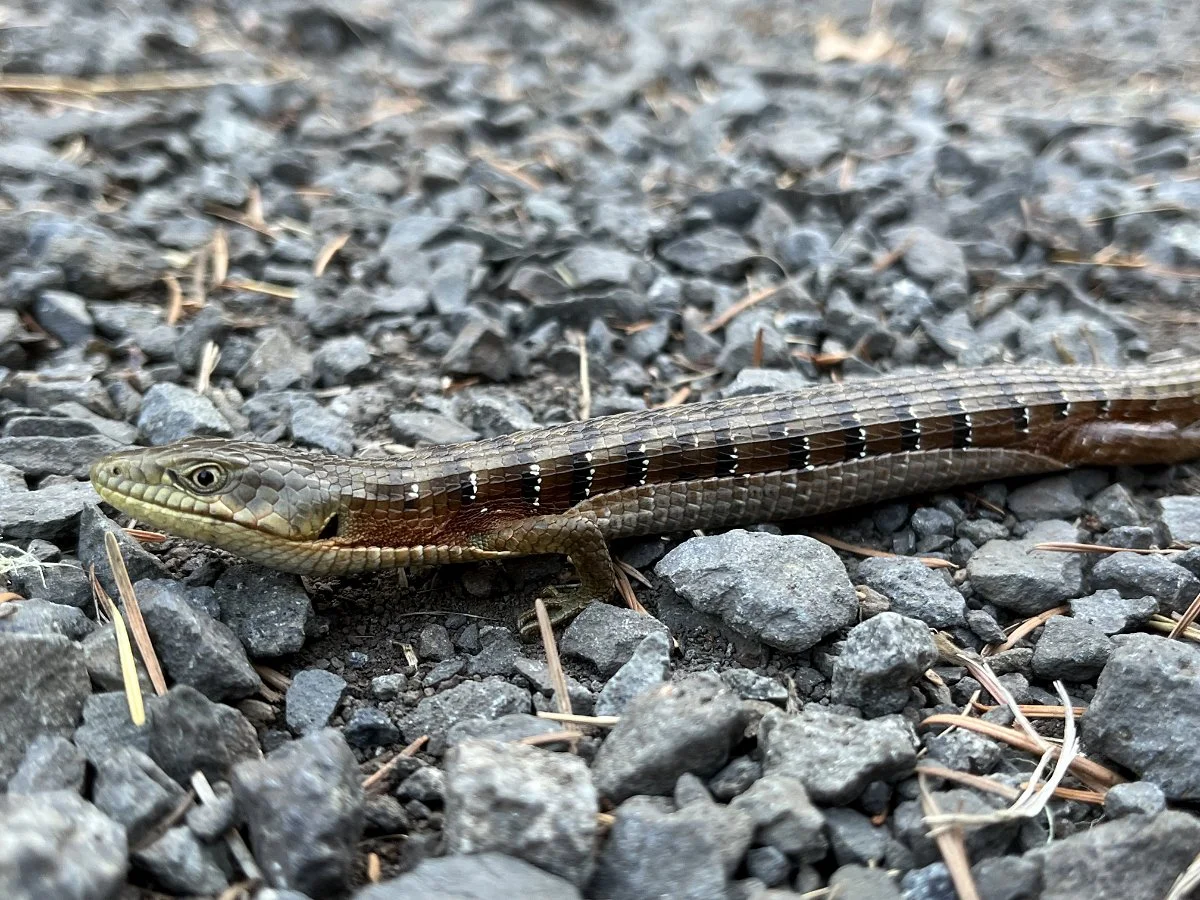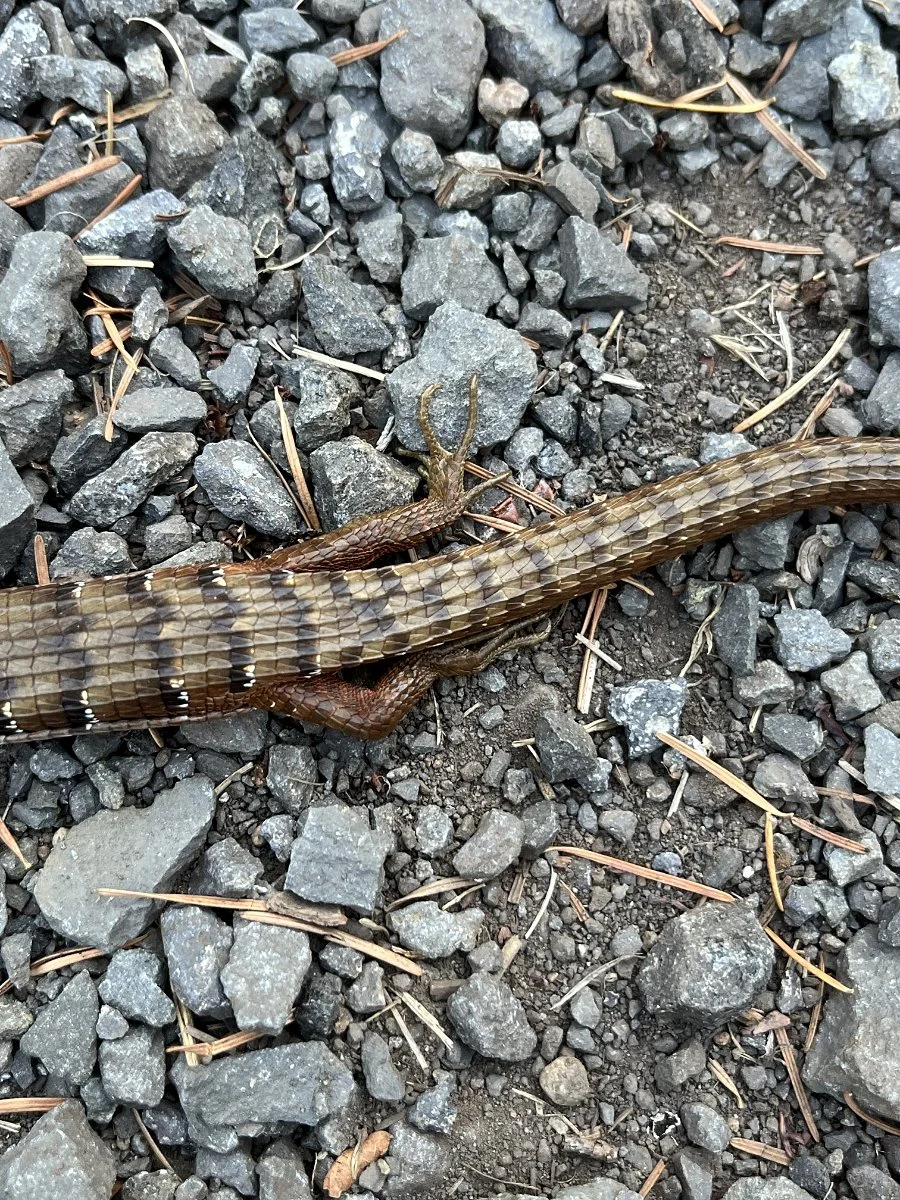At the top of the zigzag trail where it comes out of the forest, the landscape opens up into a small, grassy meadow with a mix of Oregon white oaks, bigleaf maples and Douglas-firs along the edge. It is a nice transition zone where I always pause because I often see lots of birds here.
The other day I came upon a southern alligator lizard basking on the gravel path as I entered this area. I have seen one before, but this time I was struck by how long and slender its body was. With its body resting flat on the ground and its legs close to its sides, it really resembled a small snake. It also slithered off the path like a snake when I was attempting to walk around it and not disturb it after I checked it out for a little while.
The top of its body is brown with black spots that form bands, its underside is pale, and there may be white spots along its side like the one here. Along the sides of the body, between the top of the body and belly, there are small scales that create a fold that allows the body to expand. This is valuable for being able to eat large prey, puff up to appear larger when threatened, and for a pregnant female to have more space to carry her eggs.
They are found in open forested landscapes and along riparian areas too. They are active during the day and like most lizards, can often be found basking in a warm, sunny spot like a rock or pathway.
Their diet mostly consists of small invertebrates such as grasshoppers, slugs, spiders, centipedes, beetles, crickets, etc. but it will also eat bird eggs, nestlings, other lizards, and small mammals.
They can shed their tail if threatened. That said, I have seen people catch this lizard a few times and it didn’t shed its tail, but it did try to bite them. Losing their tail can save their life in the moment and isn’t harmful. That said, it can affect their overall survival. It takes time to regenerate a tail and it is where they store fat for energy. Also, their agility, speed, and balance can be impaired.
I didn’t know this until I did the research to write this post. There are two western alligator lizards, a southern and a northern. The way to tell them apart is the southern species has a yellow eye and the northern one has a dark eye.
We have a few warm, sunny afternoons ahead this week in the forecast, so keep an eye out. Good luck!
Resources
Southern Alligator Lizard | Oregon Department of Fish & Wildlife. https://myodfw.com/wildlife-viewing/species/southern-alligator-lizard. Accessed 14 Oct. 2025.
Southern Alligator Lizard | Washington Department of Fish & Wildlife. https://wdfw.wa.gov/species-habitats/species/elgaria-multicarinata. Accessed 14 Oct. 2025.

